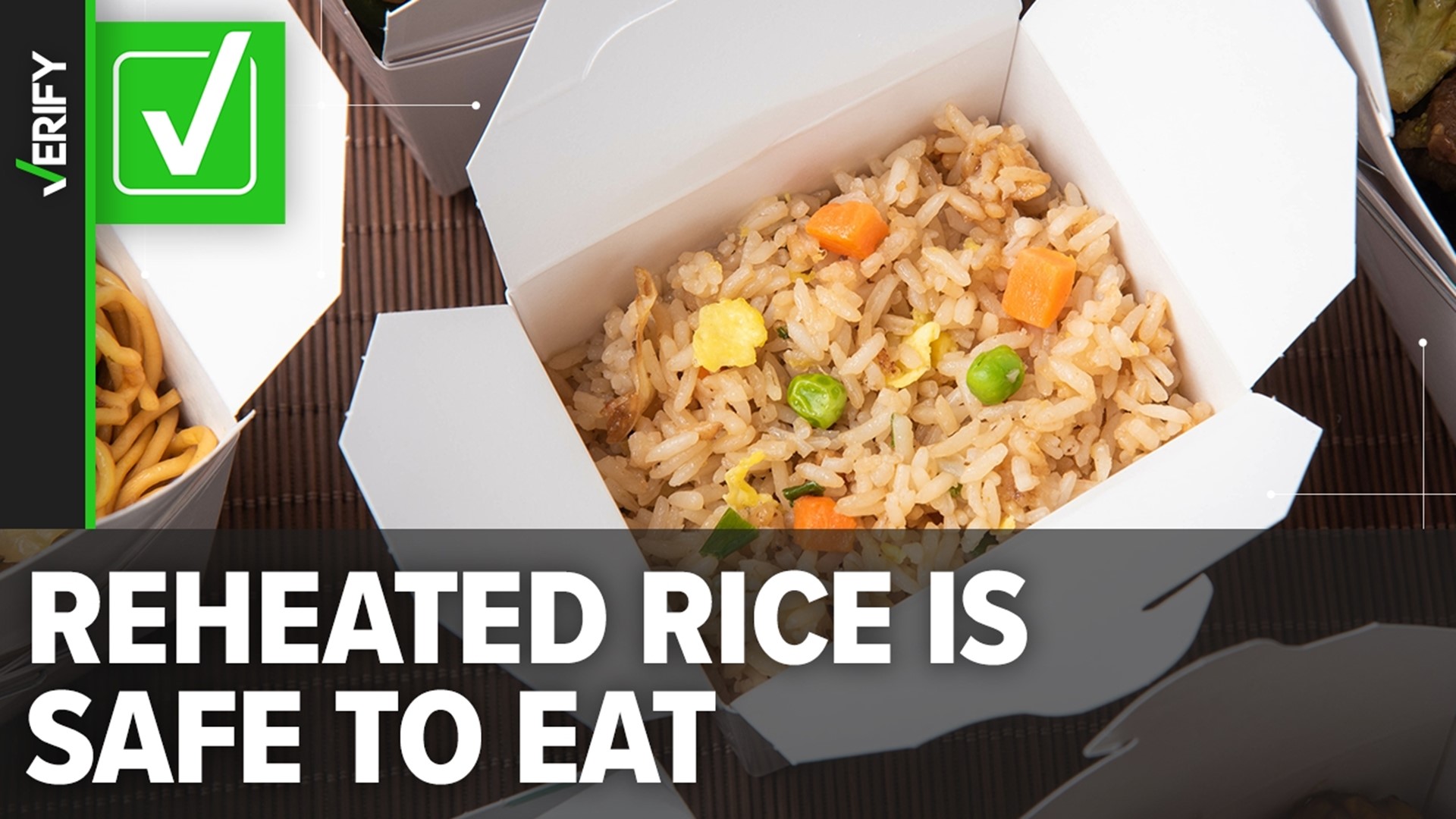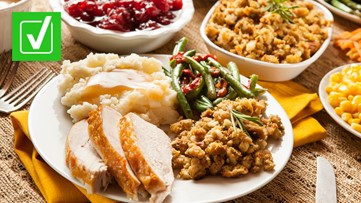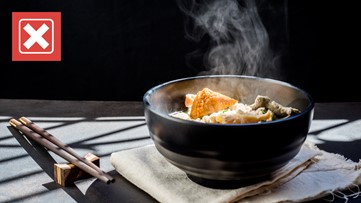In January, a viral video posted on X with over 23.4 million views claimed reheating and eating leftover rice may be dangerous.
“The danger really isn’t in the reheating part, it’s in that precarious time between the cooking and the storing,” warns the woman in the video, which was originally shared on TikTok.
The woman mentions that a type of bacteria known as Bacillus cereus (B. cereus) can quickly grow on cooked rice that’s been left at room temperature for more than an hour. She claims this can potentially lead to food poisoning or even death because B. cereus is heat resistant and “no amount of reheating, nuking, microwaving or steaming is going to save you if that bacteria did happen to grow in your rice.”
Another video on TikTok with nearly 300,000 likes says “being a med student means never being able to comfortably reheat rice ever again.”
Many people who commented on the videos questioned whether it’s safe to reheat and eat leftover rice in general, and if so, how long it can be stored safely.
THE QUESTION
Is it safe to reheat and eat leftover rice?
THE SOURCES
- U.S. Food and Drug Administration (FDA)
- Cleveland Clinic
- Article by Enzo Palombo, Ph.D., professor of microbiology at Swinburne University of Technology
- Blog post by Barbara Ingham, professor of food science and food safety extension specialist at the University of Wisconsin-Madison
- Christine Lee, M.D., gastroenterologist at the Cleveland Clinic
- Julie Stefanski, RDN, LDN, registered dietitian nutritionist and spokesperson for the Academy of Nutrition & Dietetics
THE ANSWER
Yes, it’s safe to reheat and eat leftover rice if it has been properly refrigerated.
WHAT WE FOUND
All of our sources say it’s safe to reheat and eat leftover rice as long as it was refrigerated within two hours of initial preparation. That’s because it is possible to get food poisoning caused by the Bacillus cereus (B. cereus) bacterium from eating leftover rice that’s been kept out at room temperature for too long. This is often referred to as “fried rice syndrome.”
“As with any leftover food product, reheated rice is perfectly safe as long as the product is handled safely during preparation and storage,” a U.S. Food and Drug Administration (FDA) spokesperson told VERIFY.
B. cereus is a microscopic germ most commonly found in soil and on starchy foods, including rice and pasta. It can also be found on vegetables, meats, and in many raw and processed foods.
“Fried rice syndrome” can happen when certain foods, like rice and other grains, “are prepared and held without adequate refrigeration for several hours before serving,” according to the FDA and Christine Lee, M.D., a gastroenterologist at the Cleveland Clinic.
“Like most food poisoning, ‘fried rice syndrome’ can occur when you don’t cook or store food at the right temperatures,” said Lee. “People call it ‘fried rice syndrome’ because the process of cooking rice, leaving it out and then reheating it creates a perfect environment for this germ.”
“Fried rice syndrome” is “sneakier than other types of food poisoning,” according to Lee, because B. cereus produces tiny spores that can survive higher temperatures during the cooking process, like microwaving and frying on the stovetop.
Lee says B. cereus spores are “usually harmless in small numbers,” but, for example, if cooked rice is left out on the counter at room temperature for a few hours or more, the spores can multiply and produce a toxin that can make people sick.
The symptoms of “fried rice syndrome” typically include diarrhea, fever, nausea, stomach pain and cramping, and vomiting. These symptoms tend to resolve in a few days, but people who have weakened immune systems or other health conditions may need to seek medical attention if they experience:
- Diarrhea that fails to get better over time (generally in two to three days)
- Fever over 100.4 degrees Fahrenheit
- Signs of dehydration, such as lightheadedness, dizziness, weakness, confusion, dry mouth and tongue, not urinating or sunken eyes
In a 2023 article, Enzo Palombo, Ph.D., a microbiology professor at Swinburne University in Melbourne, Australia, wrote that people can protect themselves from “fried rice syndrome” by minimizing the time leftovers spend in the “danger zone.” The “danger zone” refers to the range of temperatures at which bacteria and toxins can grow — usually between 40° and 140° F, according to the FDA and Palombo.
“Leftovers should be hot when they need to be hot, and cold when they need to be cold,” Palombo said. “After cooking a meal, if you’re going to keep some of it to eat over the following days, refrigerate the leftovers promptly. There’s no need to wait for the food to cool.”
He also added that large batches of food can be split into smaller portions to allow the food to cool quickly in the refrigerator.
The FDA and Palombo both recommend following the two-hour rule. This means if something has been out of the refrigerator for up to two hours, it’s safe to put it back. (If temperatures are above 90 degrees Fahrenheit, then cooked food should be discarded after one hour.) But if the food has been out of the refrigerator for longer than that, they say you should throw it out.
Food safety experts have differing opinions on how many days leftover rice can be kept in the refrigerator before it should be tossed out, according to registered dietitian nutritionist Julie Stefanski. She says that some sources recommend 48 hours, while other experts, including the FDA and the U.S. Department of Agriculture, say that rice can be safely kept and eaten for up to four days.
The FDA also encourages people to follow the four steps of safe food handling — clean, separate, cook and chill— to prevent food poisoning like “fried rice syndrome.” Lee also shared the following tips:
- Store after shopping. Keep uncooked rice and pasta in a cool, dry place until you’re ready to cook it.
- Wash up. Wash your hands with soap and water before handling food.
- Cook completely. Thoroughly cook your rice or pasta using boiling water or a rice cooker.
- Eat up. Serve your food right away.
- Cool quickly. Don’t leave any cooked food out for more than two hours (or one hour if your environment is 90° F).
- Enjoy leftovers. Reheat leftovers to 165° F all the way through, and only reheat food once.
This story is also available in Spanish / Lee este artículo también en español: Es seguro recalentar y comer sobras de arroz que han sido refrigeradas adecuadamente












